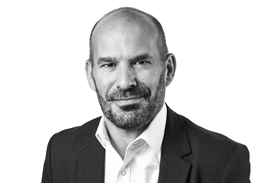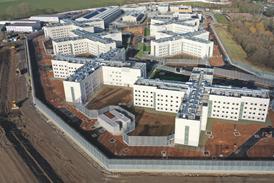This is the ethos taken forward and used on Crown House's PFI projects. "Don't mess with PFI," says the boss – Kevin Doughty, major projects director. "The price of failure is high. So no games, no tricks, no stunts, no nothing. You get in, do the most professional job that you can, with the best of intent. Nothing else will work." This is nothing new, surely. Any boss will say the same. But we all know the reality of lowest first cost wins. It is all about to change, thinks Doughty. "If ever there was a kind of project that needed a new approach and not the old acrimony and adversarialism, it is the public sector project. PFI is the answer. It is not the arena to go in cheap, thinking that you can talk your price up later. PFI produces few variations. It is effectively a design and construct project and as a consequence of that you are driven towards a different approach." These are fine words but what evidence has Doughty got to back them up? Quite a bit in fact. The three PFI projects that Crown House has completed so far have all been a success. All three have been completed on or, in one case, significantly before time. All three came in under budget from the client's point of view, and Crown House has made a healthy profit on two of them. Not bad for a pioneering venture into unchartered waters.
Crown House isn't just dipping its big toe in, either. It has been big on PFI from the start. The company worked on Fazakerley Prison, the first Home Office PFI project and is presently involved with Dartford & Gravesham hospital, the first health service PFI venture. On the books at the moment are five hospitals, an office block for the DSS and a prison. There are three more in the pipeline.
This is a full frontal attack on a new initiative – very brave. Doughty doesn't think so. "The reality is that PFI is a very affordable way of getting a new hospital, school or prison much sooner than could be provided by the public purse. It's not: 'let's have a hospital. That'll be £200 million please'. It's: 'we'll have a new hospital and pay £20 million for the next 30 years'. I think these are the financial practicalities that will make PFI an attractive proposition for a long time to come.
“PFI is good. It is robust, it challenges us, it stimulates us. We have to learn new skills. That is invaluable.”
"From an industry perspective, it is attractive if the government is sensible enough to regulate the flow of new projects, so that there aren't spikes in demand. Anything that takes away some of the boom and bust cycle in our industry has got to be good news." Good news, maybe. But, what PFI does is take away the risk from the client and lump it on to the consortium that constructs and runs the scheme. A consortium that may include the m&e contractor. "There is nothing wrong with that," says Doughty. "Risk focuses the mind and because the risks are so large you will only commit to a project if you feel that you can do it. These are not places to take chances." You can't even hide when the project is complete. The building has to be maintained for 25-30 years. The system installed at lowest first cost is not necessarily lowest cost over a 30-year period. "You have to offer much more intelligent solutions. Sometimes spending more up front is cheaper in the long run," says Doughty.
Coming up with cost effective, value added solutions is what makes a successful PFI bid, but what rewards are there for this? "The potential profits are higher but the risks are higher and the competencies that you need are higher," says Doughty. "When I joined the industry 20 years ago, I never thought that I'd have to think about tax planning, impending government legislation, whether I could influence specifications. All of a sudden, the things that I could have taken as written, playing the dumb subcontractor, I can no longer ignore. To maximise a PFI deal I have to tackle all these issues to find the best solution. But yes, the reward, if you can do all of those things and more, is there." Doughty is first to cite Crown House's prefabrication capabilities as being an advantage on PFI projects. "The projects lend themselves to it. Think of an 800-bed hospital. The beds are spread over 30 wards. The wards are identical. How would you do it? "The work is carried out in a controlled environment and so it is of better quality. You want this if you are responsible for a project for 30 years." Crown House would seem to be the perfect animal to tackle PFI projects, so is it moving away from traditional ones? Doughty thinks not: "Crown House needs to keep a balanced portfolio. PFI is good. It is robust, it challenges us, it stimulates us. We have to learn new skills. That is invaluable but we must never forget our roots. For every big, sexy PFI project that we announce there are ten others that are just as important to us.
"It's all about calculating the risks, knowing your strengths and working to them." As I leave Doughty's glass office and walk through a hub of 'open-plan' activity, he wants to tell me something but can't.
Source
Electrical and Mechanical Contractor



















